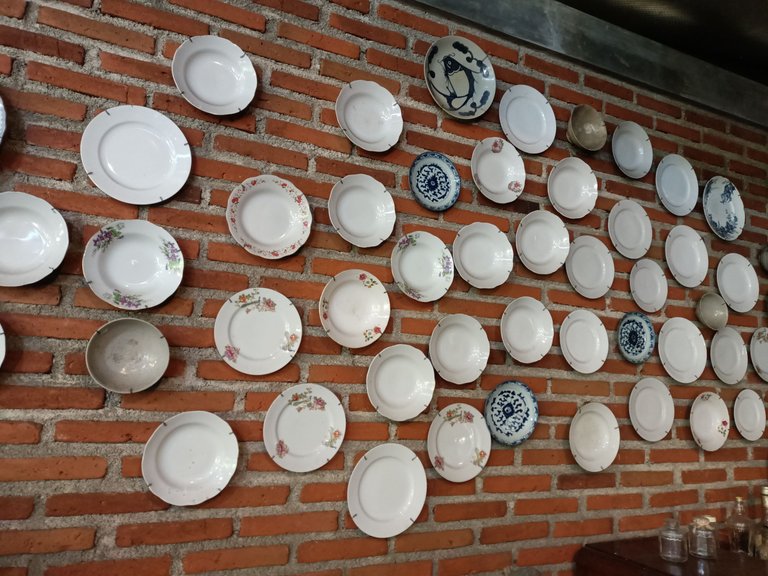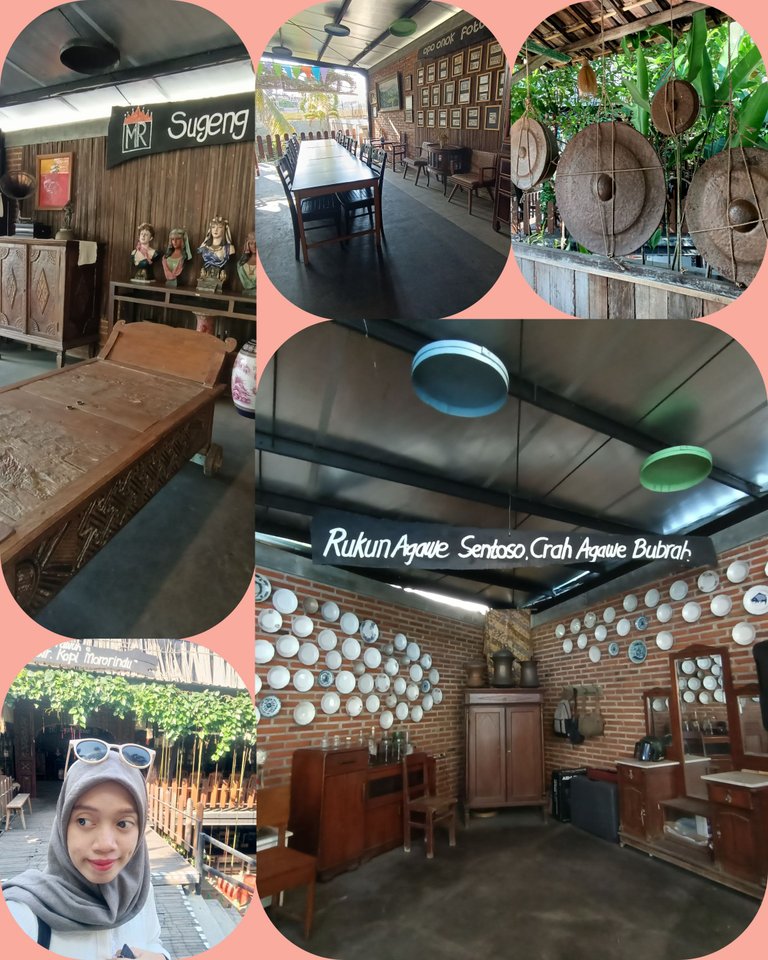
Right in front of Gudang Oleh Oleh, there is a coffee shop called KOPI MORO RINDU. From the outside, I didn't expect this to be a big coffee shop, but as it turned out, there were many amazing things inside that made me feel at home lingering in the interior of this simple coffee shop.
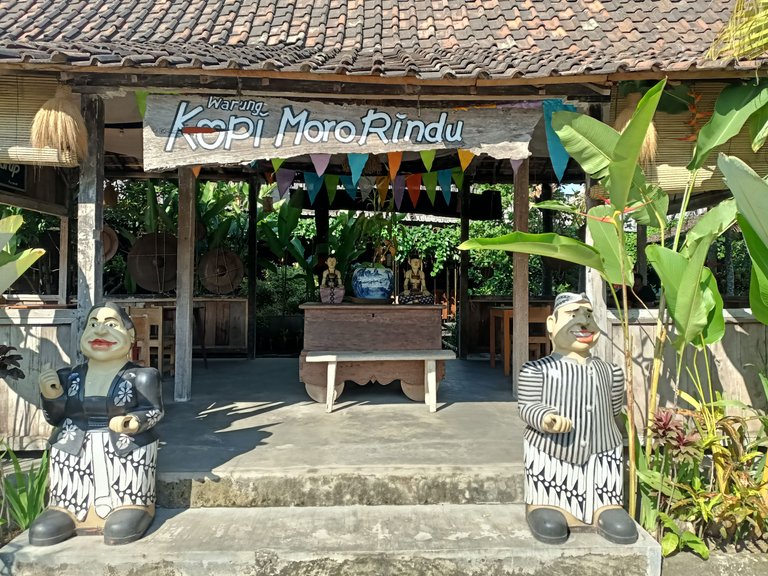
That's the impression I got from the coffee shop. If from the name, Mro Rindu means to bring a sense of longing. Perhaps this is a philosophy and prayer that anyone who has been to the coffee shop, will one day visit again because they remember the menu they have.
From the very front, neatly arranged on the left and right are a pair of male statues with beskap and blangkon. This is traditional male clothing for Javanese people. While on the left side there is a woman wearing kebaya and batik cloth as a subordinate. Not to forget, the characteristic of Javanese people is, hair that is bun.

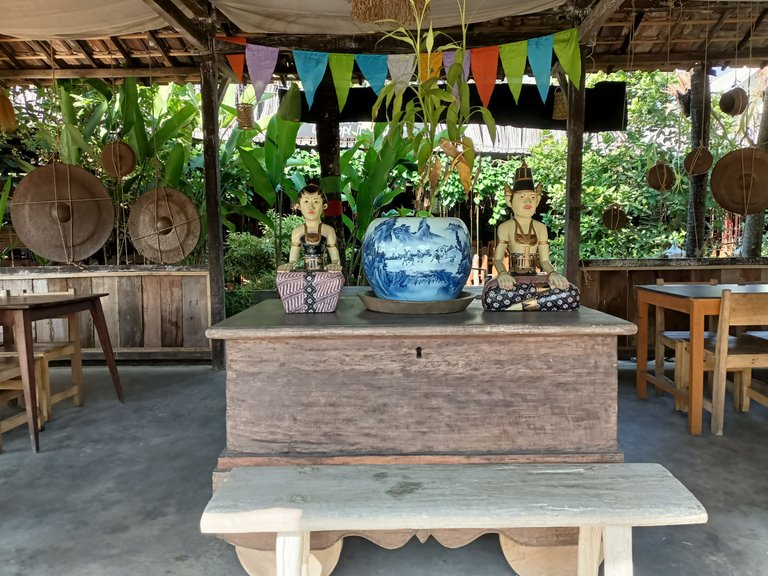
Once inside, there is a pair of male and female ornaments sitting and wearing PAES AGENG-style wedding clothes. Paes Ageng has a very distinctive feature from other Javanese wedding makeup. The two ornaments are accentuated with blue plant urns whose pattern is of travellers trapped in the snowy mountains.
- Gamelan Instruments Used for Ornament
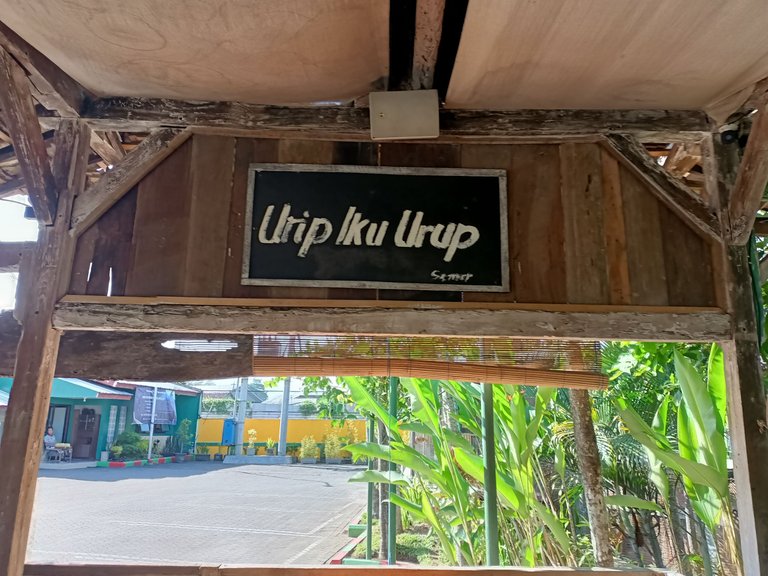
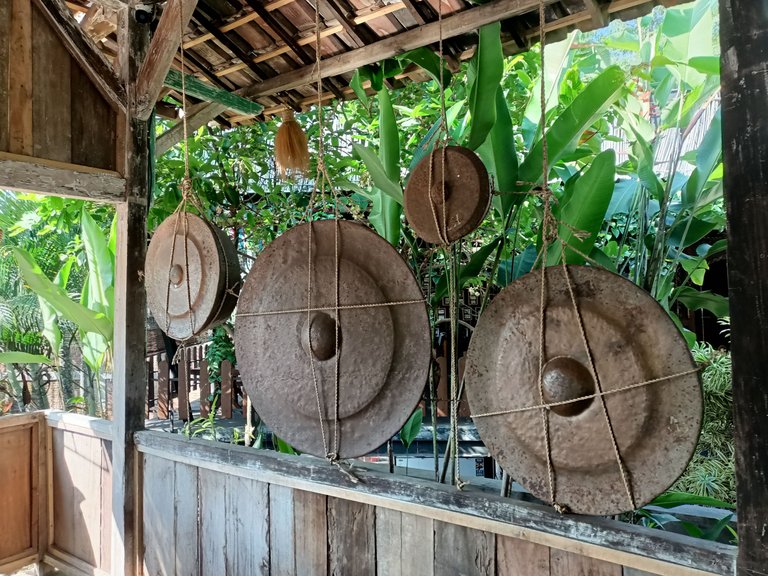
On the left and right sides after the Paes Ageng statue ornament, there are several instruments from traditional Javanese musical instruments: GAMELAN that are assembled and deliberately made as ornaments. These instruments are usually used for traditional Javanese events, such as wayang or Javanese dance in the palace. In this semi-outdoor section, the seating set is made of wood. At the left end, there is a hanging decoration that reads Urip Iku Urup, the meaning of the writing is to illustrate a philosophy that people must live. The scope is very broad. There is a lot of Javanese figurative language that has a deep meaning.
- Inner Room Full of Antiques
After ordering a coffee menu and paying at the cashier, I asked the team there for permission to take photos. So, all the photos I've uploaded here have been authorised, guys!
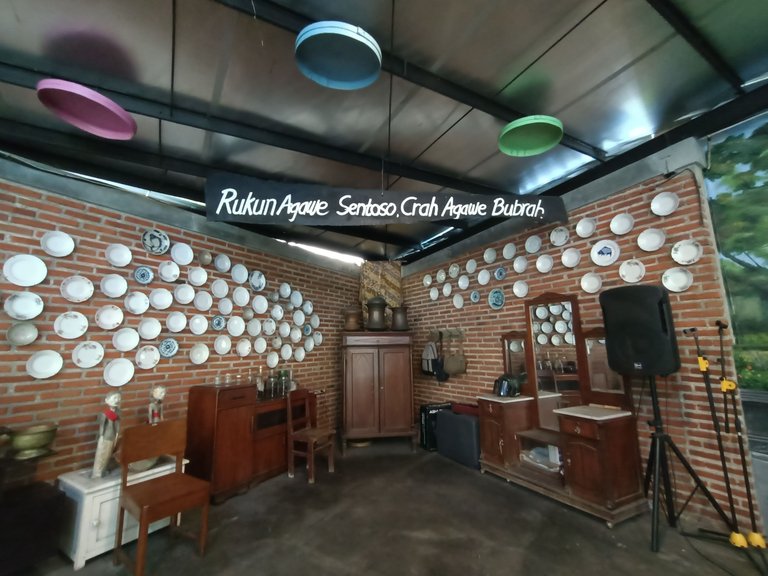
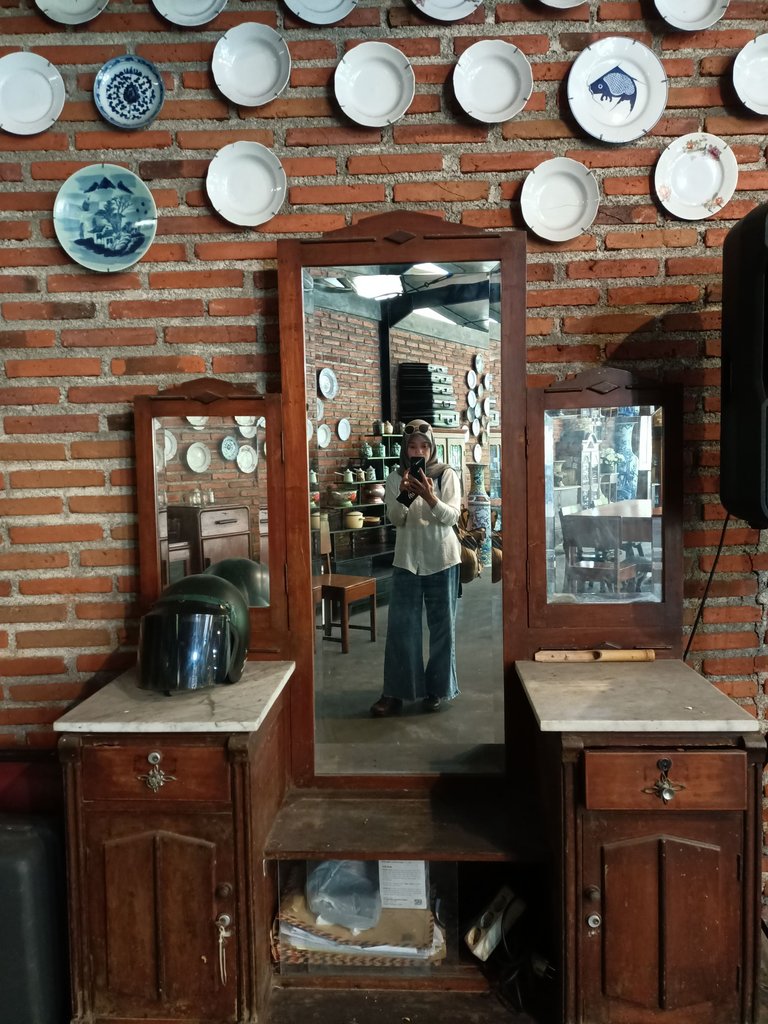

There was a corner that I guess was used as a place for live music. That's because there's a salon standing nearby. Can you notice the industrial-themed wall of the twmbok? Actually, the industrial themes were adapted from the houses of people in the past who didn't have enough money to complete the design. Hence, the unfinished design relates to the old style.
In this shop, Javanese philosophy is scattered. Like in this corner, above hangs an inscription Rukun Agawe Santosa, Crah Agawe Bubrah, it means more or less like, if we live together, we will be peaceful. If we live as enemies, we will be separated.
You can see the decoration on the wall where there are lots of plates. That is the style of the old-fashioned plates. I've seen plates with such models and patterns at my aunt's house when I was a child. And those plates tended to be more expensive than the usual plates our family used.
Moving next to it, there was a wooden shelf with mostly enamelled items: a mug with a distinctive green striated pattern, as well as ceting, a rice bowl also made of enamel.
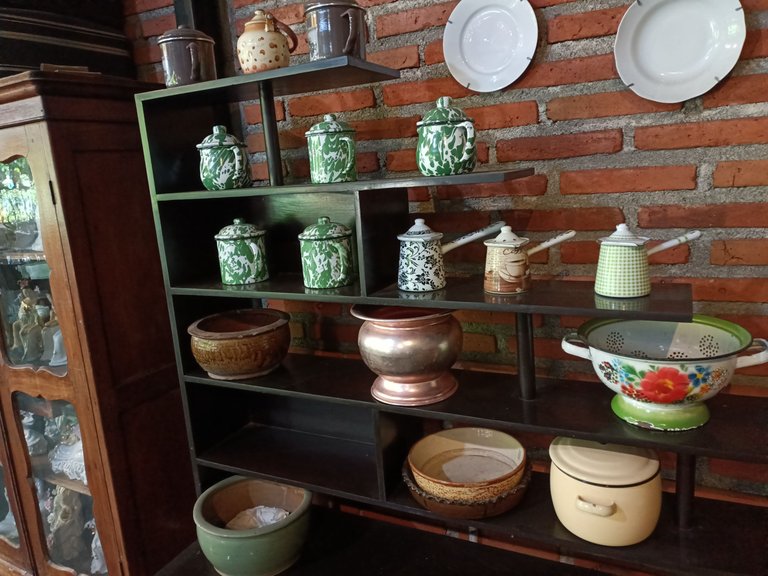
There were also copper pots, and some pottery containers.
Look! I'm mirroring myself in the glass of an old-fashioned cupboard. Really, the whole interior design of this Moro Rindu Coffee shop is very nostalgic and invokes memories of my childhood.
- OLD-FASHIONED DESK CHAIR SET
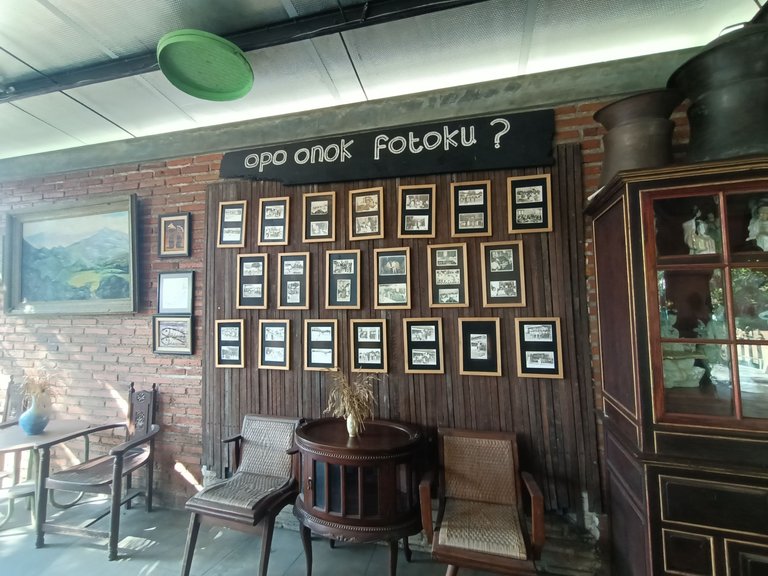
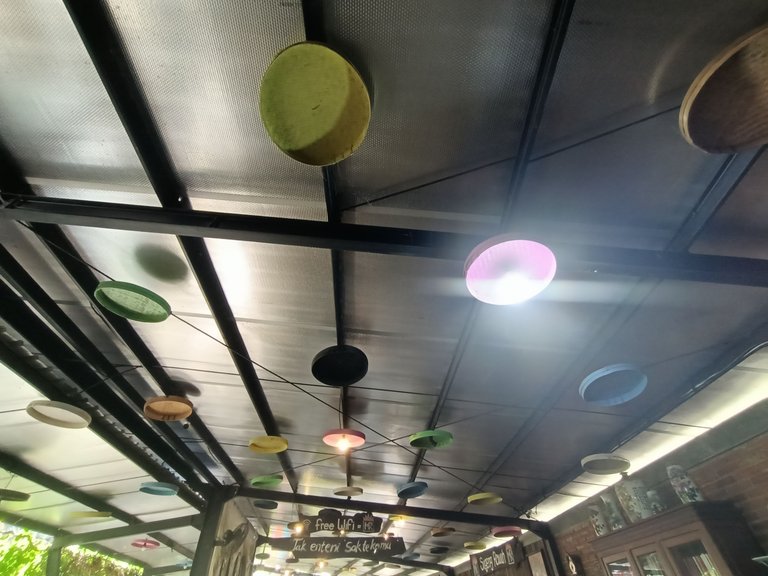
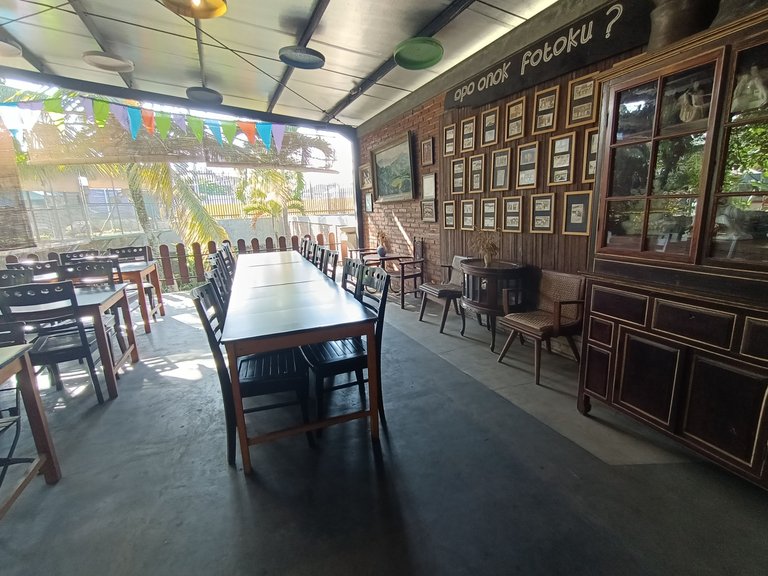
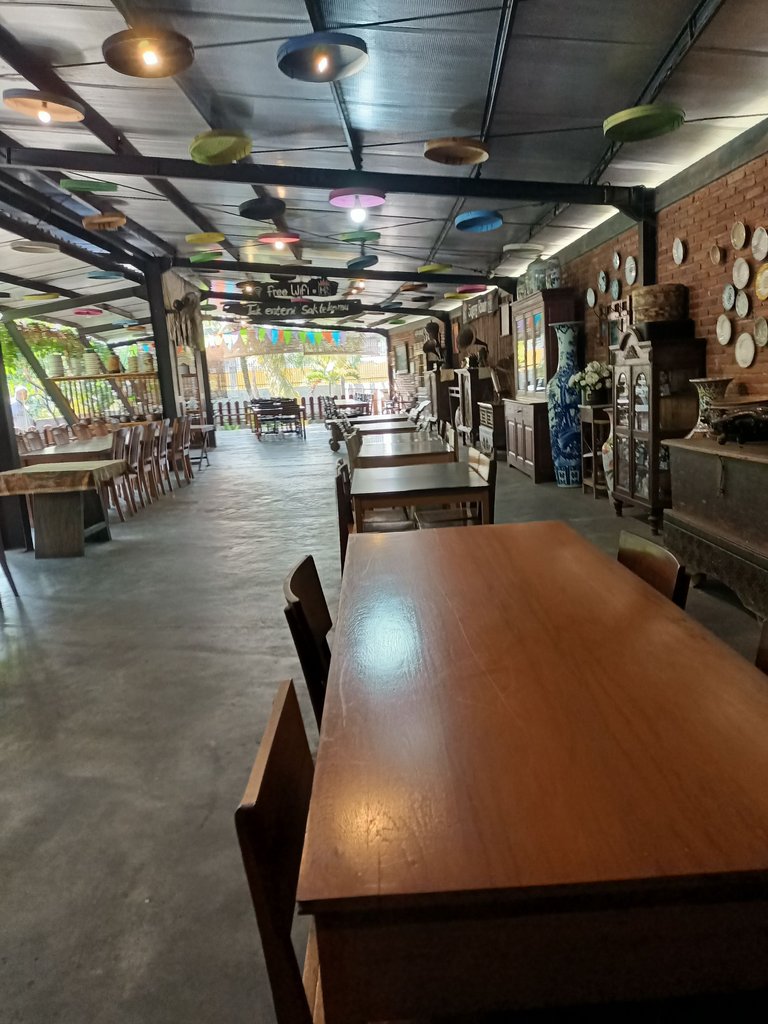
People in the 80s used the type of long high table model and a package with wooden chair seats with backrests. Like the one here. Some of them used this type of table and chair set. Not to forget, the ornaments used in the ceiling to enliven the lights are made of tampah (this is a tool to clean rice from impurities such as gravel, or rice husks that have not been wasted. Tampah is made of thinly-shaved woven bamboo. The original colour of the tampah is actually yaw arna bamboo, however, in this shop, it is given various colours for ornamentation.
- Mix with thick Chinese culture
Although I didn't have time to ask directly, I can see that the owner of this shop is most likely of Chinese descent. It can be seen from the collection of books that are used as displays, as well as the style of large and expensive jars that do not depict Indonesia. That is, the type of urn that is usually owned by a Chinese family. In addition, there was a cabinet containing statues of gods and goddesses of certain religions.
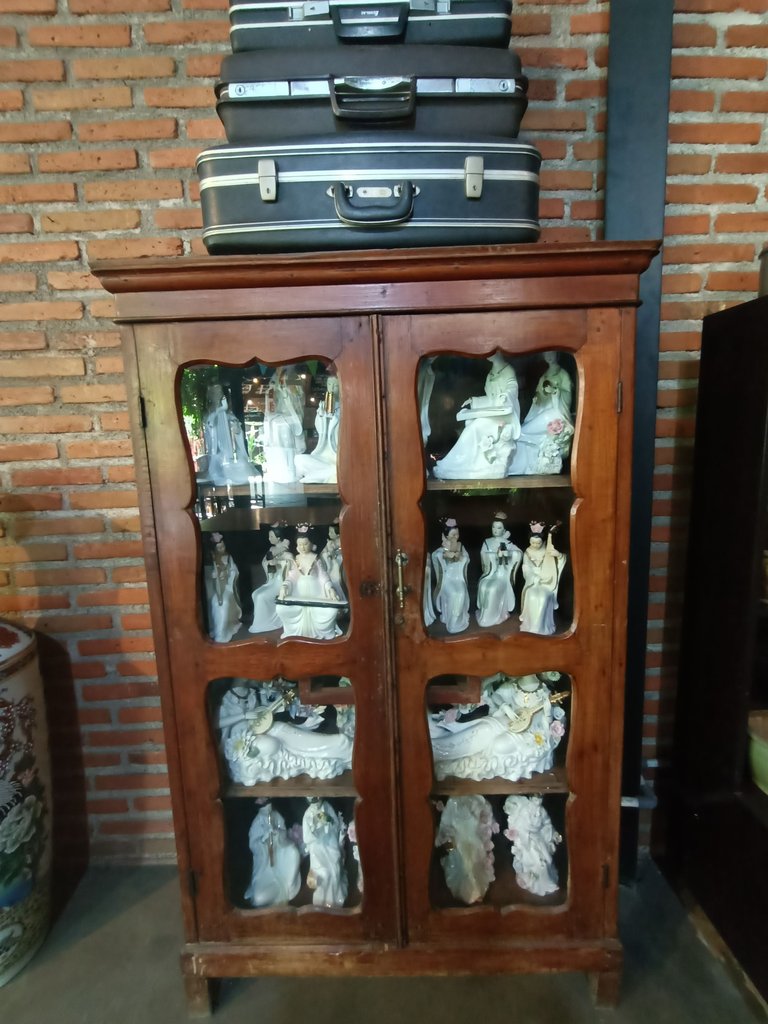
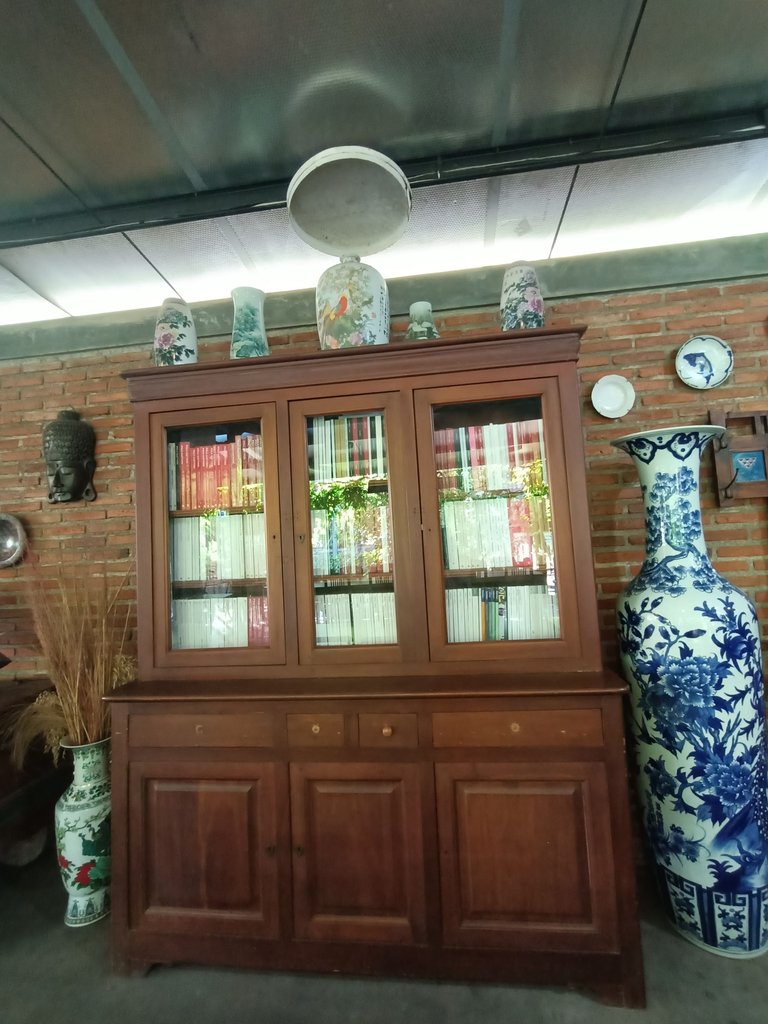
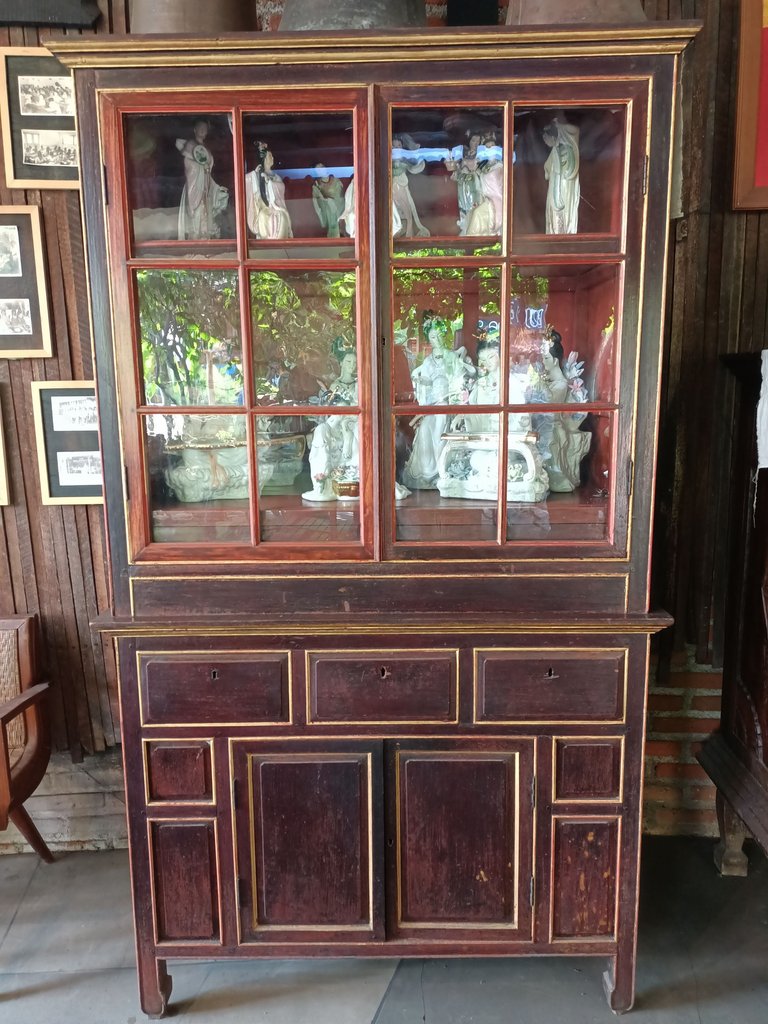
Although it is a bit of a contrast between Javanese and Chinese culture, when arranged in such a way in one room, it gives a sweet and magical impression. There are old-school tools such as a black disc player with a loudspeaker mouthpiece, as well as a typewriter that looks like a harp.
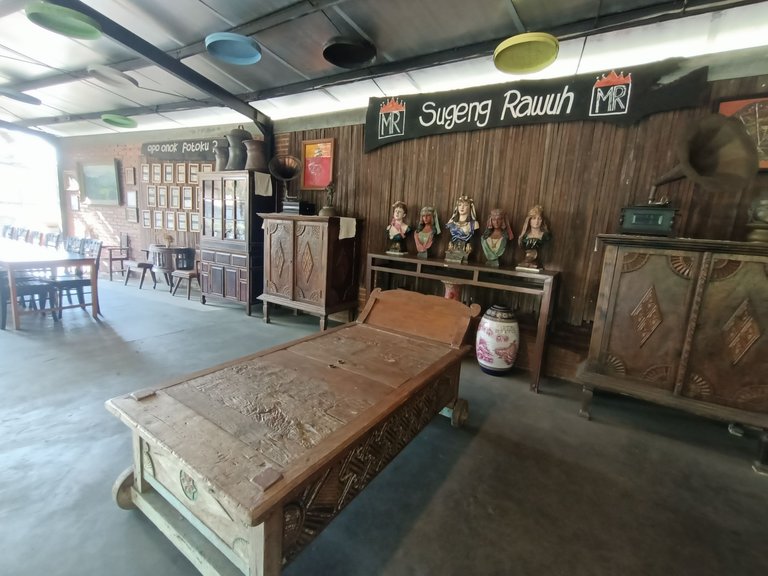
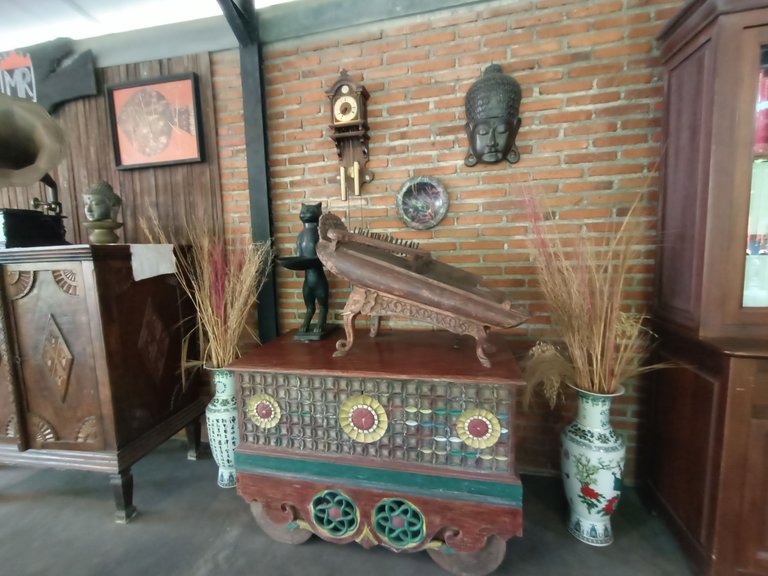

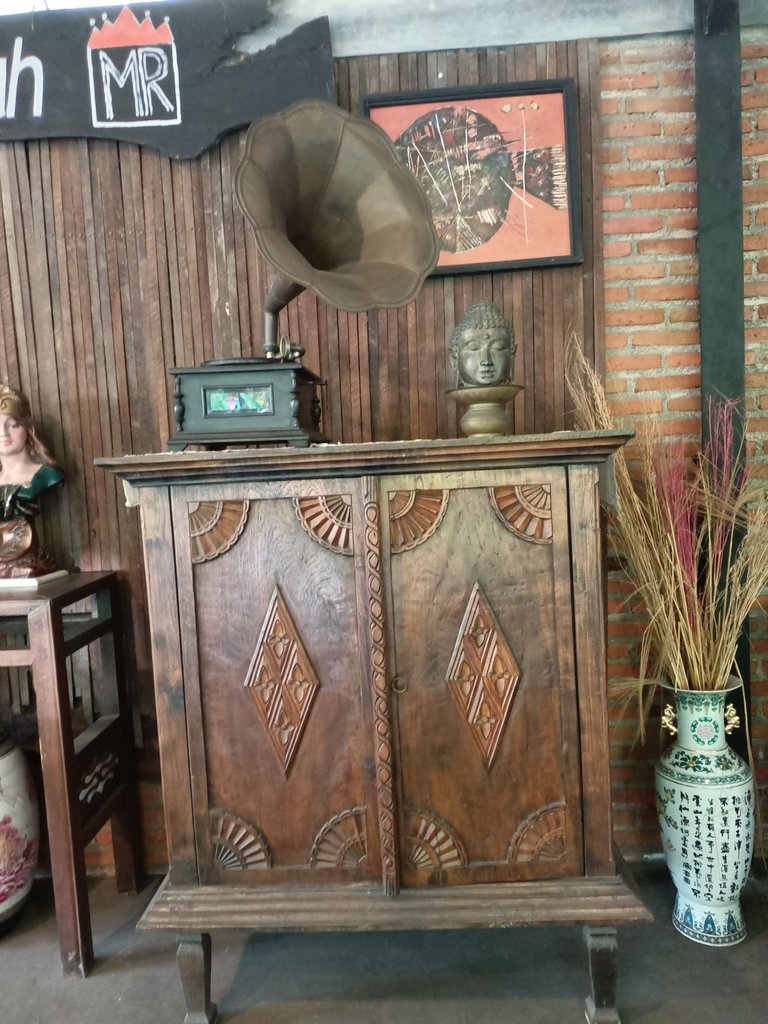
- Gate Connecting the Front and the Inside
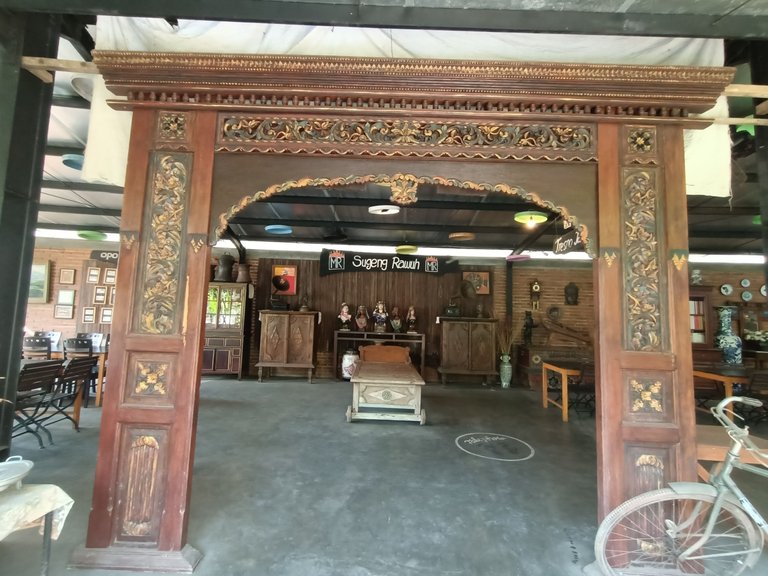
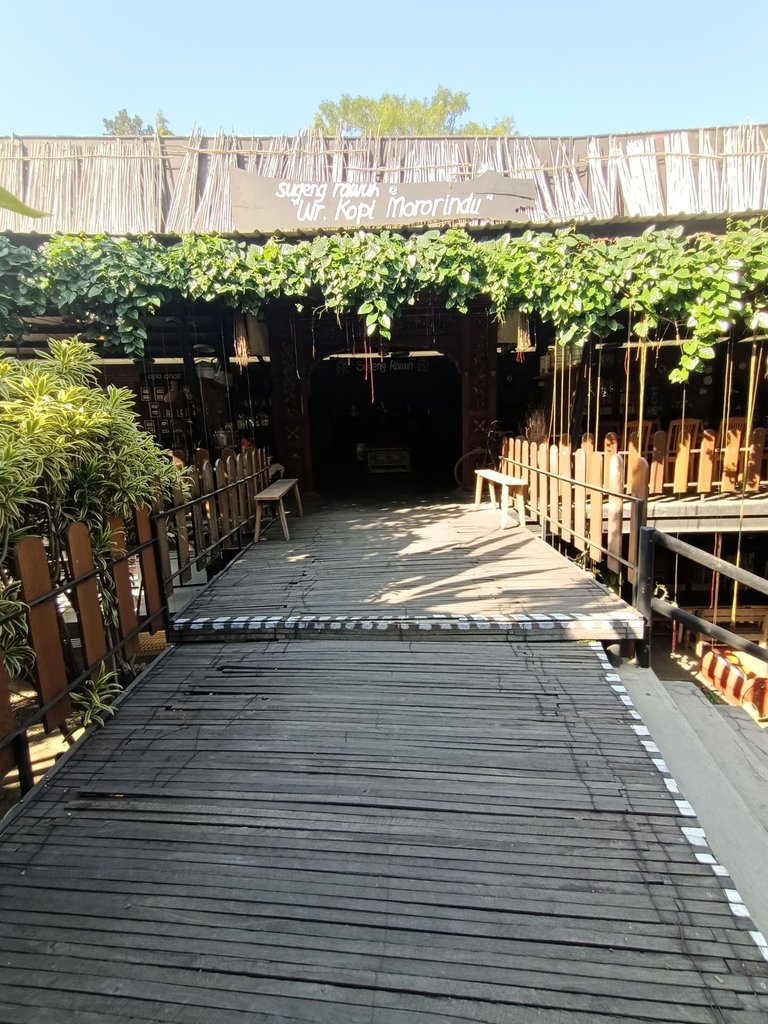
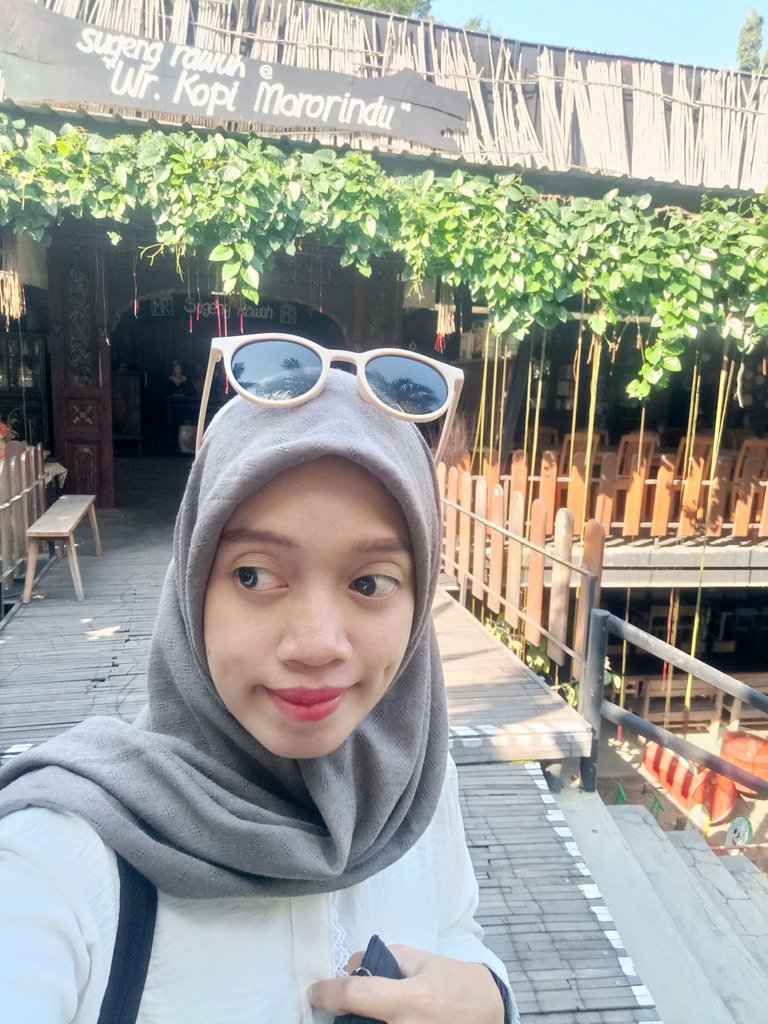
As you can see, the gate with its sturdy and beautiful teak wood is certainly old. However, the colourful batik patterns are still clearly visible, as if there has been no damage. Amazing, isn't it?
So that's my journey around the design of the Moro Rindu Coffee shop. Hopefully it can inspire readers. Have a nice day, everybody!

Hi, I am the child of the universe, I like to read books with various genres. I was born in the city of batik but can't draw batik yet. I want to be a novelist, but my works are only short poems that are included in anthology books.
please share my content if you feel my content is good for everyone to read. Thank you. Let's be friends!
